Audi 2012 Annual Report Download - page 181
Download and view the complete annual report
Please find page 181 of the 2012 Audi annual report below. You can navigate through the pages in the report by either clicking on the pages listed below, or by using the keyword search tool below to find specific information within the annual report.-
 1
1 -
 2
2 -
 3
3 -
 4
4 -
 5
5 -
 6
6 -
 7
7 -
 8
8 -
 9
9 -
 10
10 -
 11
11 -
 12
12 -
 13
13 -
 14
14 -
 15
15 -
 16
16 -
 17
17 -
 18
18 -
 19
19 -
 20
20 -
 21
21 -
 22
22 -
 23
23 -
 24
24 -
 25
25 -
 26
26 -
 27
27 -
 28
28 -
 29
29 -
 30
30 -
 31
31 -
 32
32 -
 33
33 -
 34
34 -
 35
35 -
 36
36 -
 37
37 -
 38
38 -
 39
39 -
 40
40 -
 41
41 -
 42
42 -
 43
43 -
 44
44 -
 45
45 -
 46
46 -
 47
47 -
 48
48 -
 49
49 -
 50
50 -
 51
51 -
 52
52 -
 53
53 -
 54
54 -
 55
55 -
 56
56 -
 57
57 -
 58
58 -
 59
59 -
 60
60 -
 61
61 -
 62
62 -
 63
63 -
 64
64 -
 65
65 -
 66
66 -
 67
67 -
 68
68 -
 69
69 -
 70
70 -
 71
71 -
 72
72 -
 73
73 -
 74
74 -
 75
75 -
 76
76 -
 77
77 -
 78
78 -
 79
79 -
 80
80 -
 81
81 -
 82
82 -
 83
83 -
 84
84 -
 85
85 -
 86
86 -
 87
87 -
 88
88 -
 89
89 -
 90
90 -
 91
91 -
 92
92 -
 93
93 -
 94
94 -
 95
95 -
 96
96 -
 97
97 -
 98
98 -
 99
99 -
 100
100 -
 101
101 -
 102
102 -
 103
103 -
 104
104 -
 105
105 -
 106
106 -
 107
107 -
 108
108 -
 109
109 -
 110
110 -
 111
111 -
 112
112 -
 113
113 -
 114
114 -
 115
115 -
 116
116 -
 117
117 -
 118
118 -
 119
119 -
 120
120 -
 121
121 -
 122
122 -
 123
123 -
 124
124 -
 125
125 -
 126
126 -
 127
127 -
 128
128 -
 129
129 -
 130
130 -
 131
131 -
 132
132 -
 133
133 -
 134
134 -
 135
135 -
 136
136 -
 137
137 -
 138
138 -
 139
139 -
 140
140 -
 141
141 -
 142
142 -
 143
143 -
 144
144 -
 145
145 -
 146
146 -
 147
147 -
 148
148 -
 149
149 -
 150
150 -
 151
151 -
 152
152 -
 153
153 -
 154
154 -
 155
155 -
 156
156 -
 157
157 -
 158
158 -
 159
159 -
 160
160 -
 161
161 -
 162
162 -
 163
163 -
 164
164 -
 165
165 -
 166
166 -
 167
167 -
 168
168 -
 169
169 -
 170
170 -
 171
171 -
 172
172 -
 173
173 -
 174
174 -
 175
175 -
 176
176 -
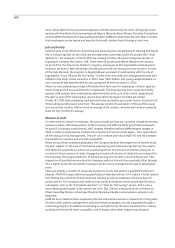 177
177 -
 178
178 -
 179
179 -
 180
180 -
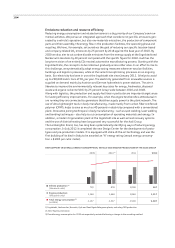 181
181 -
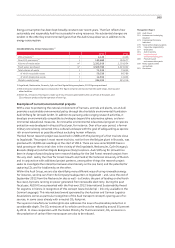 182
182 -
 183
183 -
 184
184 -
 185
185 -
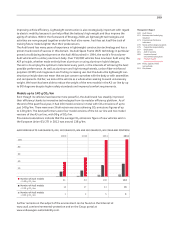 186
186 -
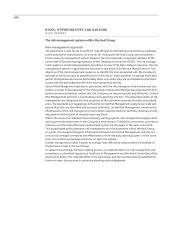 187
187 -
 188
188 -
 189
189 -
 190
190 -
 191
191 -
 192
192 -
 193
193 -
 194
194 -
 195
195 -
 196
196 -
 197
197 -
 198
198 -
 199
199 -
 200
200 -
 201
201 -
 202
202 -
 203
203 -
 204
204 -
 205
205 -
 206
206 -
 207
207 -
 208
208 -
 209
209 -
 210
210 -
 211
211 -
 212
212 -
 213
213 -
 214
214 -
 215
215 -
 216
216 -
 217
217 -
 218
218 -
 219
219 -
 220
220 -
 221
221 -
 222
222 -
 223
223 -
 224
224 -
 225
225 -
 226
226 -
 227
227 -
 228
228 -
 229
229 -
 230
230 -
 231
231 -
 232
232 -
 233
233 -
 234
234 -
 235
235 -
 236
236 -
 237
237 -
 238
238 -
 239
239 -
 240
240 -
 241
241 -
 242
242 -
 243
243 -
 244
244 -
 245
245 -
 246
246 -
 247
247 -
 248
248 -
 249
249 -
 250
250 -
 251
251 -
 252
252 -
 253
253 -
 254
254 -
 255
255 -
 256
256 -
 257
257 -
 258
258 -
 259
259 -
 260
260 -
 261
261 -
 262
262 -
 263
263 -
 264
264 -
 265
265 -
 266
266 -
 267
267 -
 268
268 -
 269
269 -
 270
270 -
 271
271 -
 272
272 -
 273
273 -
 274
274 -
 275
275 -
 276
276 -
 277
277 -
 278
278 -
 279
279 -
 280
280 -
 281
281 -
 282
282 -
 283
283 -
 284
284 -
 285
285
 |
 |

184
Emissions reduction and resource efficiency
Reducing energy consumption and related emissions is a big priority of our Company’s environ-
mental activities. We pursue an integrated approach that considers not just CO2 emissions gen-
erated by a vehicle’s operation, but also raw materials extraction, the production of component
parts and their assembly, the energy flow in the production facilities, the operating phase and
recycling. We have, for example, set ourselves the goal of reducing our specific location-based
and company-related CO2 emissions by 25 percent by 2018 against the base year of 2010. By
2020 we also aim to cut carbon dioxide emissions from the energy supply at the Ingolstadt and
Neckarsulm locations by 40 percent compared with the specific figure for 2010. Audi has the
long-term vision of an entirely CO2-neutral automotive manufacturing process. Starting with the
Ingolstadt site, the concept is to be rolled out gradually across other sites. In an effort to rise to
this challenge, we systematically adopt energy-saving measures whenever we plan facilities,
buildings and logistics processes, while at the same time optimizing processes on an ongoing
basis. Eco-electricity has been in use at the Ingolstadt site since January 2012. It helps to avoid
up to 290,000 metric tons of CO2 per year. The electricity generated from renewable sources is
supplied on demand mainly by Austrian and German hydroelectric power stations. The aim is
likewise to improve the environmentally relevant key ratios for energy, freshwater, disposed
waste and organic solvents (VOC) by 25 percent Group-wide between 2010 and 2018.
Along with logistics, the production and supply facilities in particular are important target areas
for lasting efficiency improvements. For example, when the engine test benches at Neckarsulm
are running they are connected to generators that then supply power to the plant network. The
use of ultra-lightweight tools in body manufacturing, made mainly from carbon fiber-reinforced
polymer (CFRP), helps to save as much as 40 percent in electricity compared with a conventional
plant. Innovative joining techniques in body manufacturing – such as spot welding, laser welding
and bonding techniques – also help to cut consumption of operating materials and energy. In
addition, a modern trigeneration plant at the Ingolstadt site as well as heat recovery systems
and the use of district heating have long proved very successful for the Audi Group.
The Lamborghini brand, too, has long been systematically identifying ways of reducing energy
consumption. In July 2012 it completed the new Design Center for the development of proto-
types and pre-production models. It is equipped with state-of-the-art technology and was the
first building of its kind in Italy to be awarded an “A” energy rating (annual energy consump-
tion ≤ 8 kWh per cubic meter).
DEVELOPMENT IN OVERALL ENERGY CONSUMPTION, VEHICLE AND ENGINE PRODUCTION BY THE AUDI GROUP
1) Ingolstadt, Neckarsulm, Brussels, Győr and Sant’Agata Bolognese plants; excluding CKD production
2) 2012 figures provisional
3) Overall energy consumption for 2010 retrospectively restated following a change to the recording method
Vehicle production 1)
(thousand units)
Engine production
(thousand units)
1,008
1,884
2,509
Total energy consumption2)
(in GWh)
201220112010 3)
2009
967
1,917
2,607
878
1,648
2,527
750
1,384
2,157
